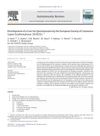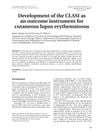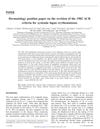Evaluation of Disease Activity and Damage in Different Subtypes of Cutaneous Lupus Erythematosus Using the CLASI
September 2010
in “
Journal of the European Academy of Dermatology and Venereology
”
cutaneous lupus erythematosus CLE CLASI LE tumidus acute CLE subacute CLE chronic CLE erythema scale hypertrophy dyspigmentation scarring atrophy panniculitis skin lupus Cutaneous Lupus Erythematosus Disease Area and Severity Index LET acute skin lupus subacute skin lupus chronic skin lupus redness scaling thickening skin discoloration wasting inflammation of fat
TLDR The CLASI is useful but needs revision to accurately assess all cutaneous lupus erythematosus subtypes.
The study evaluated the effectiveness of the Cutaneous Lupus Erythematosus Disease Area and Severity Index (CLASI) in assessing disease activity and damage across different subtypes of cutaneous lupus erythematosus (CLE) in 50 patients (42 female, 8 male). Results indicated that the total CLASI activity and damage scores were significantly lower in patients with LE tumidus (LET) compared to those with acute CLE (ACLE), subacute CLE (SCLE), and chronic CLE (CCLE). Specific scores for erythema, scale/hypertrophy, dyspigmentation, and scarring/atrophy/panniculitis also varied significantly among the subtypes, with LET generally showing lower scores. The study concluded that while CLASI is a useful tool for analyzing CLE, it does not accurately assess all subtypes, suggesting a need for its revision.


